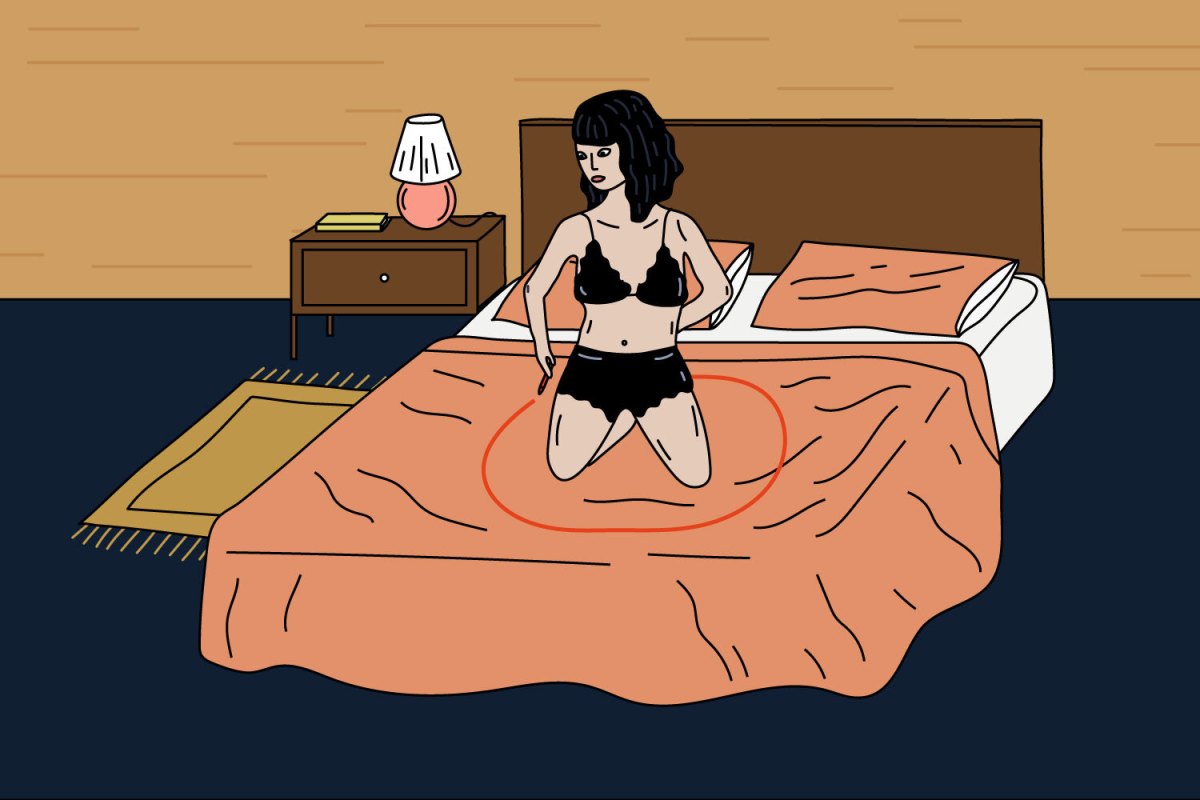Ours is a culture that encourages us to say yes to things. The messaging is everywhere. We should be adventurous, work harder, try new things, see more places and never, ever have limits. Why? Because if we have limits, we’re boring. This, my friends, is bullshit.
Sure, trying new things and pushing yourself out of your comfort zone can be fun and exciting, but that doesn’t negate the need for personal safety, understanding what works for you and what does not.
When it comes to sex, a willingness to overlook these needs has the potential to take on sinister implications. You are not obliged to say yes to anything you do not want to do. You do NOT have to kiss that person you’re not into. You do NOT have to engage in anal play just because someone wants you to give it a go. You do not have to do anything. And likewise, if someone is not down to do something you want to do, you have zero right to push the issue.
This is where boundaries come in. Understanding boundaries and how they work is a crucial part of consent education. Silva Neves, an accredited psychosexual and relationships psychotherapist, succinctly defines a boundary as the following: “A personal boundary is the line between what is acceptable and what is unacceptable in relationships with others, with romantic and sexual partners and also with friends, family members and peers.”
But how do you even go about setting boundaries in a world where people feel like saying “No” makes them a lackluster asshole? It can — and should — be done. Here’s how.
“Explicit” vs. “Implicit” boundaries
“Boundaries that are healthy [and] are well communicated [can] shift over time,” says Dr. Kelly Donohoe, a licensed psychologist. This means that your boundaries may not always be the same. So take time to check in with yourself regularly and consider your boundaries, whether they still work for you, and, if not, how you can shift them to align better with your current circumstances and place in life.
There are two types of boundaries when it comes to sex: explicit and implicit. Knowing the difference is a key component of boundary setting.
An explicit boundary is one that you clearly and directly communicate with a partner. It’s something personal to you and you choose these explicit boundaries based on your own preferences. These should be discussed and clearly stated in order to let someone know what is on and off the table. For instance, if you’re not okay with someone choking you during sex, you can say: “Choking is off-limits.” That might seem like an extreme example, but as Lorrae Bradbury, a sex coach and founder of the sex-positive site, Slutty Girl Problems, points out, choking is now so common in mainstream porn that there have been many instances where people assume choking is on the table IRL just because they see it so often in media. As messed up as that is, it only makes the need for understanding and setting boundaries all the more crucial.
Implicit boundaries are a bit more hazy, as these are boundaries that one assumes based on the way we function as a society. “They are related to human rights, legal rights and the accepted codes of socialization,” Neves says. “For example, we all know that hitting someone is crossing a boundary, and this does not need to be explicitly indicated.” Unfortunately, as Bradbury explained, some boundaries we think are obvious and don’t need to be communicated can lead to someone crossing them without realizing that they have done so.
Why understanding the difference is important
If you’re thinking, “Wow, this is confusing,” that’s okay. Because honestly, it can be.
“It is important to know the difference between implicit and explicit boundaries because if you’re confused about them, you may not recognize that you’re being abused,” Neves says. “For example, some people may say: ‘He’s making me feel bad, but I know he loves me,’ If someone makes you feel bad, they may have breached an implicit boundary and manipulated you into making you believe it is for love.”
In the casual dating world, it’s all about listening to yourself and not ignoring discomfort. Basically, if something doesn’t feel right to you, makes you feel uncomfortable, or you’re just not into it, that’s an indication that an implicit boundary has been crossed. If this happens, stop what you’re doing and say: “I’m uncomfortable. I’d like to stop now.”
Likewise, if you’re with someone and they don’t seem to be enjoying themselves, aren’t talking much, flinch when you try to kiss them etc., don’t just plow ahead. Stop and figure out what the hell is going on, because you may be crossing a boundary that hasn’t been explicitly stated.
Setting boundaries (and reaffirming them) before, during and after a date
Setting and reaffirming your boundaries before a date or sexual experience is so important. “Many of us have plenty of time to talk with someone via text before we meet for a date. This allows us a chance to set expectations before we spend time with someone new,” Donohoe explains. “Where you meet, what you’re looking for, and how you think the night might end are all fair game. In sex, we MUST set boundaries around what we expect, like and how comfortable we are in order to have the best experience.”
It’s also important to reaffirm those boundaries during and after the date. This can happen either with yourself or with a partner, should a situation arise that deems the need for a rehashing. “During the conversation, you can explore all the pleasurable things you love, and clearly state that the things you don’t love are off the table,” Bradbury says. “You don’t need to explain your reasons or context for your boundaries. Your boundaries are valid and don’t require any further explanation. There’s no need to apologize for setting a boundary.”
No apologies for sticking to your metaphorical guns, okay? I’ve said it already, but it bears repeating: Your boundaries are valid and they are your right. That is the only thing that matters here.
Here’s the thing: If you set a boundary and someone doesn’t respect that boundary, that is a huge red flag. If you remind them of the boundary — for example, ‘I don’t enjoy hand holding’ — and they still continue to cross it, that is an indication that this person doesn’t understand how boundaries work and does not respect you enough to adhere to your personal preferences.
If someone crosses an explicit boundary during sex, stop what is happening immediately. “Don’t be afraid to stop it. It is essential,” Neves explains. “Then you explain explicitly that it was a breach of boundaries and ask them with more assertiveness to remember it and not do it again.” He offers this example, “’I said it before, and I wanted you to hear it again and remember it: I don’t like doggy style, so please do not ask me to do this. Are you clear that this must not happen again?’”
When it comes to sex, if it isn’t a “HELL YES” it is a “No.” If you reaffirm the boundary and a partner refuses to respect it, then that is rape — and remember, that goes both ways. Respecting boundaries is a two-way street: just as you have a right to assert your own boundaries and have them respected, you have an obligation to respect the ones others set for themselves, whether or not they’ve been made explicit.
The Charge will help you move better, think clearer and stay in the game longer. Subscribe to our wellness newsletter today.



























